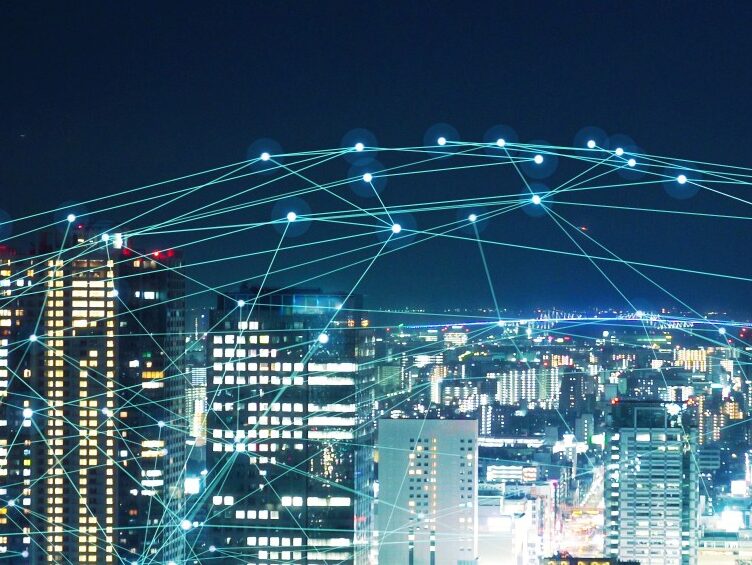NB-IoT Explained: What Is It, and How Does It Work?
By Anna Ukovich, Ph.D.
November 28, 2022
By Anna Ukovich, Ph.D.
November 28, 2022
Internet of Things (IoT) solutions expand and improve daily business operations worldwide. Innovations in cellular narrowband IoT (NB-IoT) network technology broaden potential IoT applications by:
The impact of NB-IoT is revolutionary for power efficiency and smart management. Let’s explore NB-IoT radio technology, how it works and what applications it will enable.

NB-IoT is a cellular low-power wide-area network (LPWAN) technology standard. It’s deployed over resource blocks (i.e., a unit of network resources) on existing cellular LTE networks or dedicated ones. NB-IoT can be the best solution for connecting people and businesses to devices that transact small data amounts. These devices expend low amounts of energy since they can spend time in sleep mode.
Its efficiencies in indoor coverage, energy expenditure and maintenance contribute to an increase in IoT-enabled devices. Experts estimate that there will be over 29 billion IoT devices by 2030.
NB-IoT was initially specified in 3GPP’s Release (Rel) 13. 3GPP introduced it strictly as a connectivity solution for non-moving devices. NB-IoT devices are designed to operate on a very narrow 180 kHz spectrum to lower hardware costs.
NB-IoT can be deployed on the network in three different modes:
3GPP Rel 14 gave NB-IoT enhanced mobility, albeit not to the extent that other cellular technologies are mobile. Rel 14 also improved data rate performance:

As new wireless technologies emerge, where does NB-IoT fit? Short-range radio solutions like Bluetooth® wireless technology are useful but have too high a bandwidth. They also don’t reach far enough for applications requiring a wide geographic span. LTE-M technology has more expansive coverage capabilities but is more costly.
NB-IoT is a low-bitrate technology that is integral to 4G and 5G technology. It suits applications that need wide-area coverage. NB-IoT’s radio and data protocols enable coverage to reach deep indoors and underground areas.
With less power consumption comes greater device possibilities. The simpler a radio waveform, the less power it will consume. The simplicity of NB-IoT’s waveform technology and smart power-saving modes combine to consume less power.
NB-IoT modems deliver battery life lasting more than 10 years when all power-saving guidance is followed. As a result, businesses will replace batteries less frequently, reducing maintenance and operational costs.
Connect more devices for less and with greater placement flexibility. The technology uses licensed spectrum, which international standards regulate.
NB-IoT networks are available in most countries worldwide. The NB-IoT module costs less and is simpler to integrate into the sensor or device. The cellular infrastructure supporting it can connect many devices and save security and maintenance costs.
NB-IoT will revolutionize cities and businesses that rely on access to data in hard-to-reach locations, including:
When you obtain connectivity from an expert IoT provider, you can manage the deployment with more accessible control.
Furthermore, its cost-efficiency makes it feasible for existing IoT applications that haven’t gained widespread acceptance because of previously prohibitive costs.
These applications include:
From farming to health care to industrial utilities, expect NB-IoT to become integral to the 5G application framework. NB-IoT and LTE-M are expected to coexist in 5G networks for many years. They will be the only technologies to support cellular LPWA use cases.
LTE-M is a full-fledged cellular standard. It supports full mobility and even elementary voice (i.e., Voice over LTE), neither of which are available in NB-IoT. LTE-M is a low-power standard. However, it consumes more power because it delivers higher data rates (up to 1 Mbps for Cat M1) and implements a fuller cellular protocol.
Still, LTE-M can be put in Power Saving Mode (PSM) and extended Discontinuous Reception (eDRX) and deliver multiyear solutions for battery-powered IoT devices. Depending on the coverage scenario, NB-IoT applications must tolerate latency that can reach seconds, and LTE-M has a lower latency in the tens of milliseconds.
Are you looking to design an IoT solution that incorporates NB-IoT technology? We have helped hundreds of businesses with NB-IoT modules and solutions as they prepare for changes in wireless connectivity.
Contact us for expert device design support and request a developer kit.
Editor’s Note: This blog was originally published on 14 February 2018 and has since been updated.